MaryAnn Bernal's Blog, page 153
August 31, 2015
History Trivia - King Henry VIII of England excommunicated
August 31
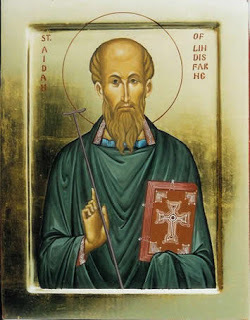
651 St. Aidan died. A monk at Iona, Scotland, Aidan became the first bishop of Lindisfarne.
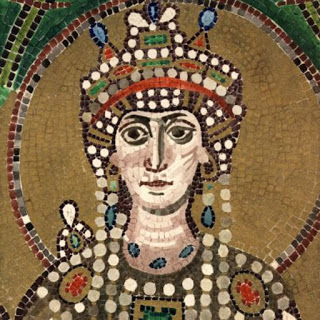
1056 Byzantine Empress Theodora became ill and died suddenly a few days later without children to succeed the throne, thus ending the Macedonian dynasty.
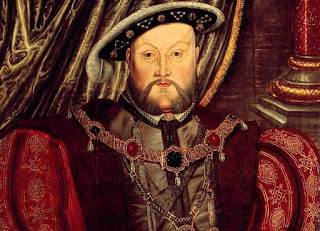
1535 Pope Paul II deposed and excommunicated King Henry VIII.

651 St. Aidan died. A monk at Iona, Scotland, Aidan became the first bishop of Lindisfarne.

1056 Byzantine Empress Theodora became ill and died suddenly a few days later without children to succeed the throne, thus ending the Macedonian dynasty.

1535 Pope Paul II deposed and excommunicated King Henry VIII.
Published on August 31, 2015 01:30
August 30, 2015
History Trivia - Treaty of the More signed
August 30
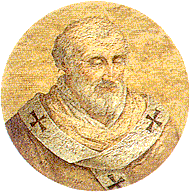
1181 Pope Alexander III died. He is noted in history for laying the foundation stone for the Notre Dame de Paris.
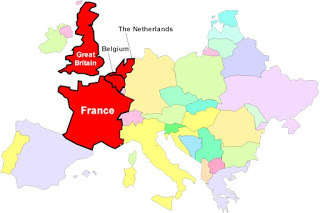
1525 Treaty of the More signed between Henry VIII of England and Francis I of France. England agreed to give up some territorial claims on France. In return, France was to pay a pension and was to prevent the Duke of Albany from returning to Scotland.

1181 Pope Alexander III died. He is noted in history for laying the foundation stone for the Notre Dame de Paris.

1525 Treaty of the More signed between Henry VIII of England and Francis I of France. England agreed to give up some territorial claims on France. In return, France was to pay a pension and was to prevent the Duke of Albany from returning to Scotland.
Published on August 30, 2015 01:00
August 29, 2015
Lucky treasure seeker unearths 1,000-year-old Viking coin hoard in Wales
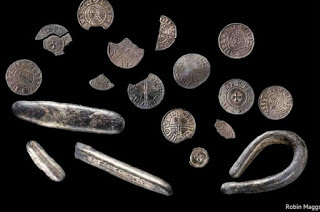 Ancient Origins
Ancient OriginsAbout 1,000 years ago an unlucky soul apparently buried his treasure—a cache of Viking coins—in a field in Wales and never dug it up again. Perhaps the medieval person died before retrieving it or forgot exactly where it was buried. The treasure may also have been part of a burial. Whatever the case, the apparent bad luck of the medieval hoarder turned out to be good luck for a Welshman with a metal detector.
The hoard includes coins and coin fragment and ingots going back to the time of King Cnut the Great. Treasure hunter Walter Hanks of Llanllyfni was using a metal detector in Llandwrog in March when he got a hit, reports Wales Online.
Llandrwrog is in Gwynedd, which was a Welsh kingdom around the time the coins were buried. The find will help scholars build a better picture of the 11th century economy of Gwynedd, said Dr. Mark Redknap of the Department of History and Archaeology at the National Museum Wales.
 “Canute Reproving His Courtiers,” an etching by R.E. Pine, depicts a legend told about Canute that says he thought he could stop the tide from rising, but when he could not he hung his crown on a crucifix and never wore it again. (
Wikimedia Commons
)Found among the collection of coins were fragments of three or four pennies with the visage of Cnut, all likely from the Chester mint. Cnut or Canute was king of England from 1016 to 1035. He also ruled over Denmark, Norway and part of Sweden from 985 to 1035.
“Canute Reproving His Courtiers,” an etching by R.E. Pine, depicts a legend told about Canute that says he thought he could stop the tide from rising, but when he could not he hung his crown on a crucifix and never wore it again. (
Wikimedia Commons
)Found among the collection of coins were fragments of three or four pennies with the visage of Cnut, all likely from the Chester mint. Cnut or Canute was king of England from 1016 to 1035. He also ruled over Denmark, Norway and part of Sweden from 985 to 1035.Redknap told Wales Online:
‘There are three complete finger-shaped ingots and one fragmentary finger-shaped metal ingot. Nicking on the sides of the ingots is an intervention sometimes undertaken in ancient times to test purity, and evidence that they had been used in commercial transactions before burial. At least four hoards on the Isle of Man indicate that bullion retained an active role in the Manx economy from the 1030s to 1060s, and the mixed nature of the Llandwrog hoard falls into the same category. As such it amplifies the picture we are building up of the wealth and economy operating in the kingdom of Gwynedd in the 11th century.’The hoard includes 14 silver pennies minted in Dublin under the Irish-Scandinavian king Sihtric Anlafsson, who ruled from 989 to 1036. Archaeologists say such Irish coins are rarely unearthed on the British mainland. Eight of these coins were dated 995 AD and six were thought to be from 1018.
 The treasure found by a Welshman with a metal detector includes silver pennies and coin fragments from the time of King Cnut of England and Scandinavia. (Wales Online photo)Researchers told Wales Online they think the coins were deliberately buried. The Wales Online story does not mention any human bones or remains found near the coin hoard.
The treasure found by a Welshman with a metal detector includes silver pennies and coin fragments from the time of King Cnut of England and Scandinavia. (Wales Online photo)Researchers told Wales Online they think the coins were deliberately buried. The Wales Online story does not mention any human bones or remains found near the coin hoard.The cache has been declared treasure by northwest Wales Coroner Dewi Pritchard-Jones. The National Museum Wales did not give a value for the coins, but the museum wants to buy them with financing from the Heritage Lottery Fund. The coins and ingots will be taken to the British Museum for safekeeping in the meantime.
“The independent Treasure Valuation Committee, will commission an expert valuer to offer their view on current market/collector value and the committee will consider this, before making their recommendation,” said a museum spokesman. “Finders and landowners are consulted and are able to offer comment or commission their own valuations, if they wish. Usually what happens is that the value is split equally between the finder and the landowner with each getting 50% of the current market value.”
Featured image: The treasure found by a Welshman with a metal detector includes silver pennies and coin fragments from the time of King Cnut of England and Scandinavia. Credit: Robin Maggs
By Mark Miller
Published on August 29, 2015 07:09
History Trivia - Treaty of Picquigny signed
August 29
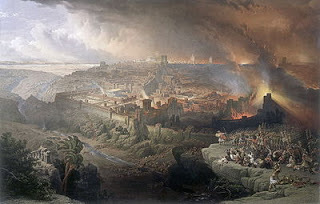
70 The Temple of Jerusalem burned after a nine-month Roman siege.
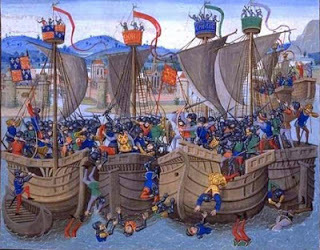
1350 Battle of Winchelsea (Les Espagnols sur Mer): The English naval fleet under King Edward III defeated a Castilian fleet of 40 ships. Between 14 and 26 Castilian ships were captured, and some were sunk, while 2 English vessels were sunk and many suffered heavy losses.
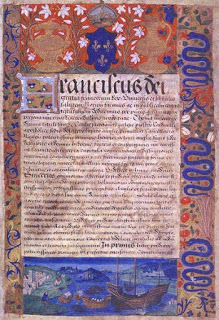
1475 The Treaty of Picquigny ended a brief war between France and England. Louis XI of France paid Edward IV of England to return to England and not take up arms to pursue his claim to the French throne. Edward's brother Richard, Duke of Gloucester (later Richard III), opposed the treaty and refused the pension Louis offered.

70 The Temple of Jerusalem burned after a nine-month Roman siege.

1350 Battle of Winchelsea (Les Espagnols sur Mer): The English naval fleet under King Edward III defeated a Castilian fleet of 40 ships. Between 14 and 26 Castilian ships were captured, and some were sunk, while 2 English vessels were sunk and many suffered heavy losses.

1475 The Treaty of Picquigny ended a brief war between France and England. Louis XI of France paid Edward IV of England to return to England and not take up arms to pursue his claim to the French throne. Edward's brother Richard, Duke of Gloucester (later Richard III), opposed the treaty and refused the pension Louis offered.
Published on August 29, 2015 01:30
August 28, 2015
History Trivia - Third Crusade - Siege of Acre
August 28
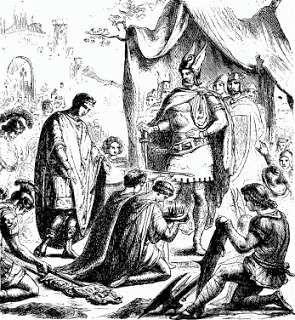
476 the western Roman Empire founded by Augustus in 27 BC ended at Ravenna, where Emperor Romulus Augustulus was deposed by the barbarian leader Odoacer (Germanic chieftain).
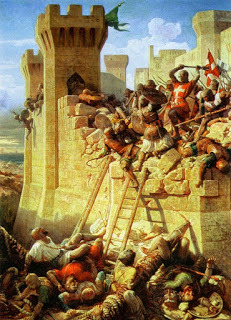
1189 Third Crusade: the Crusaders began the Siege of Acre under Guy of Lusignan.
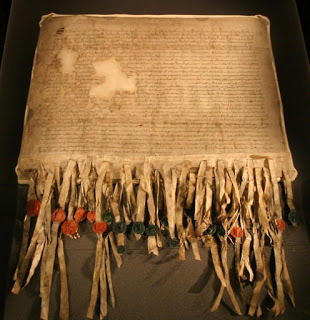
1296 After the Scots were defeated at the Battle of Dunbar, Edward I had the Scottish land owners, churchmen and burgesses swear their allegiance by signing the The Ragman Rolls.

476 the western Roman Empire founded by Augustus in 27 BC ended at Ravenna, where Emperor Romulus Augustulus was deposed by the barbarian leader Odoacer (Germanic chieftain).

1189 Third Crusade: the Crusaders began the Siege of Acre under Guy of Lusignan.

1296 After the Scots were defeated at the Battle of Dunbar, Edward I had the Scottish land owners, churchmen and burgesses swear their allegiance by signing the The Ragman Rolls.
Published on August 28, 2015 01:30
August 27, 2015
Archaeologists discover Mycenaean palace and treasure trove of artifacts in southern Greece
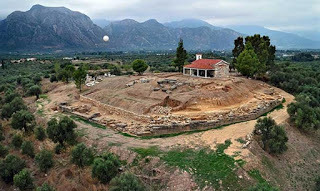 Ancient Origins
Ancient OriginsGreek archaeologists have discovered a pre-classical era Greek palace at Aghios Vassilios hill dating from the Mycenaean Age, which some researchers believe is the long-lost palace of Sparta. Important archaic inscriptions found at the site may help to shed light on the political, administrative, economic and societal organisation of the Mycenaean society around Sparta where the discovery was made.
The Greek Culture Ministry said that the palace, which had around 10 rooms, was probably built around the 17th to 16th centuries BC, in a statement reported by the Phys.org website. The archaeologists also discovered a number of important artifacts at the site, including objects used for religious ceremonies, clay figurines, a cup adorned with a bull’s head, swords and fragments of murals.
 New excavations at a site near historical Sparta may have uncovered the lost ruins of a Mycenaean Spartan palace. Among the treasures found at the site was this bull's head. Credit: Greek Ministry of CultureExcavations in the area, conducted since 2009, have revealed inscriptions on tablets, written in the Linear B script, relating to religious practices and also names and places. Linear B is the oldest script to be discovered in Europe and first appears in the historical timeline in Crete from around 1375 BC. It took until the mid-20th century for experts to decipher it properly.
New excavations at a site near historical Sparta may have uncovered the lost ruins of a Mycenaean Spartan palace. Among the treasures found at the site was this bull's head. Credit: Greek Ministry of CultureExcavations in the area, conducted since 2009, have revealed inscriptions on tablets, written in the Linear B script, relating to religious practices and also names and places. Linear B is the oldest script to be discovered in Europe and first appears in the historical timeline in Crete from around 1375 BC. It took until the mid-20th century for experts to decipher it properly.The palace was probably destroyed by fire at some point in the late 14th or early 13th century, according to available evidence.
 A photo released by the Greek Ministry of Culture on Aug. 25 shows an excavation site near Sparta in the Peloponnese region with remains of a palace of the Mycenaean period.The Mycenaean era was the last phase of the Bronze Age in Ancient Greece and is characterised by palatial city-states, works of art and writing. It was at this time that the city-states began to become established, including Pylos, Tiryns, Midea in the Peloponnese, Orchomenos, Thebes, Athens and Iolcos in Thessaly. The most prominent of them was Mycenae in Argolid which was the influence for other settlements in Epirus, Macedonia and on islands in the Aegean Sea, on the coast of Asia Minor, the Levant and in Cyprus and Italy. Mycenaean Greece collapsed at the end of the Bronze Age and the most popular theory concerning its demise places the blame of the mysterious ‘people of the sea’ (or Sea Peoples). Other theories focus on the Dorian invasion or on natural disasters and climate change. Much ancient Greek literature is based on heroes and deities from the Mycenaean era, the most notable of which is the Trojan Epic Cycle.
A photo released by the Greek Ministry of Culture on Aug. 25 shows an excavation site near Sparta in the Peloponnese region with remains of a palace of the Mycenaean period.The Mycenaean era was the last phase of the Bronze Age in Ancient Greece and is characterised by palatial city-states, works of art and writing. It was at this time that the city-states began to become established, including Pylos, Tiryns, Midea in the Peloponnese, Orchomenos, Thebes, Athens and Iolcos in Thessaly. The most prominent of them was Mycenae in Argolid which was the influence for other settlements in Epirus, Macedonia and on islands in the Aegean Sea, on the coast of Asia Minor, the Levant and in Cyprus and Italy. Mycenaean Greece collapsed at the end of the Bronze Age and the most popular theory concerning its demise places the blame of the mysterious ‘people of the sea’ (or Sea Peoples). Other theories focus on the Dorian invasion or on natural disasters and climate change. Much ancient Greek literature is based on heroes and deities from the Mycenaean era, the most notable of which is the Trojan Epic Cycle.Homer writes that the Mycenaean era was dedicated to Agamemnon, the king who led the Greeks in the Trojan War. The Mycenaean’s were keen traders, establishing contacts with countries across the Mediterranean and Europe. They were also excellent engineers and are also known for their characteristic ‘beehive’ tombs which were circular in shape with a high roof, consisting of a single stone passage leading to a chamber in which the possessions of the tomb’s occupant were also laid to rest.
 Grave circle and main entrance of the citadel at Mycenae, one of the major centres of the Mycenaean civilization. (
Wikipedia
)Mycenaean craftsmen produced distinctive items of pottery and bronze, as well as carved gems, jewellery, vases made from precious metals and glass ornaments. Oil and wine were among the major commodities traded by them.
Grave circle and main entrance of the citadel at Mycenae, one of the major centres of the Mycenaean civilization. (
Wikipedia
)Mycenaean craftsmen produced distinctive items of pottery and bronze, as well as carved gems, jewellery, vases made from precious metals and glass ornaments. Oil and wine were among the major commodities traded by them.Not much is known about the religious practices of the time, but it is likely that the Mycenaean’s practiced ritual animal sacrifice and enjoyed communal feasting. Images of the double axe in art suggest links with the Cretan Minoan culture. Robert Graves also drew much of his inspiration for his books on the Greek Myths, and later on The White Goddess, from the Mycenaean culture, casting a more romantic slight on the period. It was during this period that the tales of deities such as Dionysus, Hephaestus, Poseidon, Artemis, Hera and Potnia began to emerge. The later Greeks regarded many of the deities in the Mycenaean pantheon more as heroes or demi-gods rather than powerful gods and goddesses in themselves and so undoubtedly there were many interesting tales that were lost to history as a result.
"Tradition tells us that Sparta was an important site in the Mycenaean period," Hal Haskell, an archeologist who studies the ancient Mycenaean culture at Southwestern University in Georgetown, Texas, told Live Science. Yet no palace had been unearthed in the Spartan plain. Haskell believes the new site could be that lost Spartan palace.
Featured image: A handout photo released by the Greek Ministry of Culture shows the excavations site with remains of a palace of the Mycenaean period, bearing important inscriptions in archaic Greek, discovered near Sparta in the Peloponnese region of Greece. Image credits: Greek Ministry of Culture
By Robin Whitlock
Published on August 27, 2015 07:57
History Trivia - Battle of Plataea. - Persian forces routed
August 27
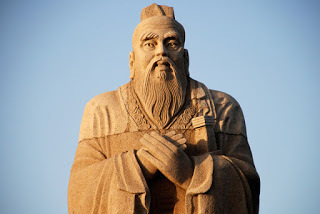
550 BC Confucius, famous wise man of China is believed to have been born around this date.
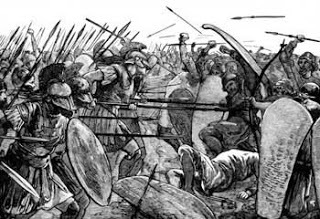
479 BC Greco-Persian Wars: Persian forces led by Mardonius were routed by Pausanias, the Spartan commander of the Greek army in the Battle of Plataea.
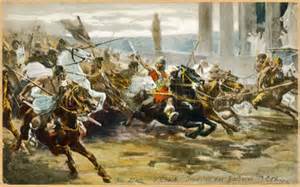
410 The sacking of Rome by the Visigoths ended after three days.

550 BC Confucius, famous wise man of China is believed to have been born around this date.

479 BC Greco-Persian Wars: Persian forces led by Mardonius were routed by Pausanias, the Spartan commander of the Greek army in the Battle of Plataea.

410 The sacking of Rome by the Visigoths ended after three days.
Published on August 27, 2015 01:30
August 26, 2015
Archaeologists Unearth Ancient Greek Palace Near Sparta
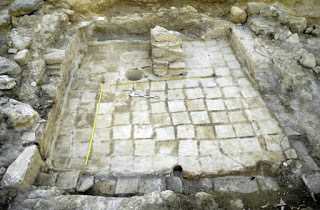 A photo released by the Greek Ministry of Culture on August 25, 2015 shows an excavations site near Sparta in the Peloponnese region with remains of a palace of the Mycenaean period.
A photo released by the Greek Ministry of Culture on August 25, 2015 shows an excavations site near Sparta in the Peloponnese region with remains of a palace of the Mycenaean period. Greek Ministry of Culture
Discovery News
Archaeologists in Greece have discovered the ruins of an ancient palace with important archaic inscriptions dating back to the Mycenaean Age, the culture ministry said Tuesday.
The palace, likely built around the 17th-16th centuries BC, had around 10 rooms and was discovered near Sparta in southern Greece.
Photos: Greek God Hermes Featured in Ancient Mosaic
At the site, archaeologists found objects of worship, clay figurines, a cup adorned with a bull’s head, swords and fragments of murals.
Since 2009, excavations in the area have unearthed inscriptions on tablets detailing religious ceremonies and names and places in a script called Linear B, the oldest script to be discovered in Europe. It first appears in Crete from around 1375 BC and was only deciphered in the mid 20th century.
Ancient Greeks Used Portable Grills at Their Picnics
The new discovery will allow for more research on the “political, administrative, economic and societal organization of the region”, and provide “new information on the beliefs and language systems of the Mycenean people,” the ministry said in a statement.
According to the culture ministry, more than 150 archaeological excavations were have been carried out in Greece so far this year, “demonstrating the importance of the archaeological wealth and cultural heritage of the country.”
Published on August 26, 2015 07:06
Archaeologists in Scotland investigate the mystery of the Rhynie Man
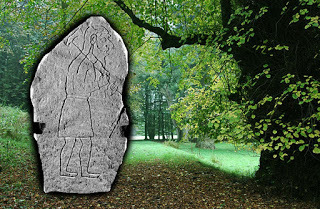 In 1978 a farmer ploughing his fields discovered a 6 foot (1.8 meter) high carved stone depicting a man carrying an axe. The monumental carving turned out to be an ancient Pictish artifact which was given the name ‘the Rhynie Man’ by local people after the name of the village nearby. However, since the discovery of the stone, archaeologists have largely remained mystified about its origins and history.
In 1978 a farmer ploughing his fields discovered a 6 foot (1.8 meter) high carved stone depicting a man carrying an axe. The monumental carving turned out to be an ancient Pictish artifact which was given the name ‘the Rhynie Man’ by local people after the name of the village nearby. However, since the discovery of the stone, archaeologists have largely remained mystified about its origins and history.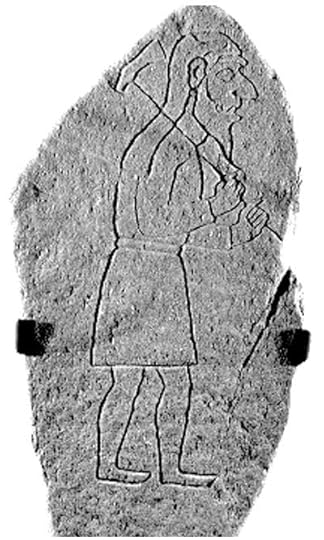 The six–foot boulder depicts the a man clad in a sleeved garment. He seems to be walking and carrying an axe. The art is believed to date back to about 700 AD. Credit: Rhynie Community Facilities Development Charitable Trust
The six–foot boulder depicts the a man clad in a sleeved garment. He seems to be walking and carrying an axe. The art is believed to date back to about 700 AD. Credit: Rhynie Community Facilities Development Charitable Trust Detail, The Rhynie Man stone. Credit: University of AberdeenFortunately, a team of archaeologists from the University of Aberdeen is leading a dig to discover more about the stone in the area where it was originally found, at Barflat. Near the site is the Craw Stane, another Pictish standing stone.
Detail, The Rhynie Man stone. Credit: University of AberdeenFortunately, a team of archaeologists from the University of Aberdeen is leading a dig to discover more about the stone in the area where it was originally found, at Barflat. Near the site is the Craw Stane, another Pictish standing stone. The "Craw Stane", a Pictish symbol stone depicting a salmon and an unknown animal. (
CC BY-SA 2.0
)
Discovery of Pictish Fort Reveals Iron Age Look-Out post for Sea Raiders
Painted Pictish Pebbles - Sling-shots or charm stones?
Archaeologists Search for Neolithic Home of Avebury Stone Circle Builders Between the Monuments
It’s believed that the stone dates from the fifth or sixth century. The figure depicted on the Rhynie Man stone is bearded, has a large pointed nose and wears a headdress.
The "Craw Stane", a Pictish symbol stone depicting a salmon and an unknown animal. (
CC BY-SA 2.0
)
Discovery of Pictish Fort Reveals Iron Age Look-Out post for Sea Raiders
Painted Pictish Pebbles - Sling-shots or charm stones?
Archaeologists Search for Neolithic Home of Avebury Stone Circle Builders Between the Monuments
It’s believed that the stone dates from the fifth or sixth century. The figure depicted on the Rhynie Man stone is bearded, has a large pointed nose and wears a headdress.“We did significant work at Rhynie in 2011/12 and identified that the area was a high-status and possibly even royal Pictish site” said Dr Gordon Noble, a Senior Lecturer in archaeology at the university. “We found many long distance connections such as pottery from the Mediterranean, glass from France and Anglo-Saxon metal work with evidence to suggest that intricate metalwork was produced on site. Over the years many theories have been put forward about the Rhynie Man. However, we don’t have a huge amount of archaeology to back any of these up so we want to explore the area in which he was found in much greater detail to yield clues about how and why he was created, and what the carved imagery might mean.”
Some people think that the Rhynie Man may have been a depiction of Esus, a Celtic god associated with trees and forestry. Some of the Pictish stones in the area also have ogham inscriptions on them. Later stones, dating from the sixth to ninth centuries were carved as Celtic crosses, remnants of the time when the Picts converted to Christianity.
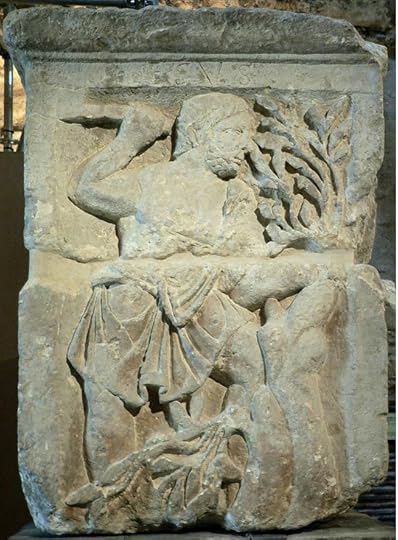 Image of Esus, a Gaulish/Celtic god, on the
Pillar of the Boatmen
. (
CC BY-SA 3.0
)The Picts themselves were a mysterious people about whom not much is known, despite occasional references in works by classical scholars. They have gained a popular reputation as savage and wild warriors, but when the Norse peoples occupied the northern regions including what is now Scotland, the Picts had already long passed into mythology as part of Celtic ‘fairy’ lore. As with another mysterious indigenous group, the Druids, the Picts never wrote anything down, which means there are no written records to assist archaeologists involved in investigating them.
Image of Esus, a Gaulish/Celtic god, on the
Pillar of the Boatmen
. (
CC BY-SA 3.0
)The Picts themselves were a mysterious people about whom not much is known, despite occasional references in works by classical scholars. They have gained a popular reputation as savage and wild warriors, but when the Norse peoples occupied the northern regions including what is now Scotland, the Picts had already long passed into mythology as part of Celtic ‘fairy’ lore. As with another mysterious indigenous group, the Druids, the Picts never wrote anything down, which means there are no written records to assist archaeologists involved in investigating them.However, the Roman orator Eumenius wrote that the Britons regarded the Picts, alongside the Irish (the Picti and Hiberni), as enemies and that they went into battle semi-naked. It is more likely that the word Pict derives from a blanket term applied by the Romans. Its literal meaning is ‘painted people’ on account of the Pictish tradition of tattooing their bodies or painting themselves with blue woad warpaint.
The Sacred Omphalos Stone, Navel of the World and Communicator of the Gods Ancient Stone of Strength is lifted by Welshman for the first time in living memory The mysterious monoliths of Asuka Nara and the Rock Ship of Masuda
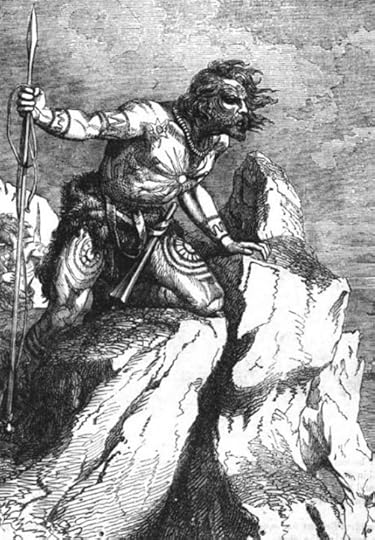 A Pict looking out to sea as depicted in a 19th century book (
Wikimedia Commons
)Pictland was never a unified region but was more likely formed from a series of kingdoms or federations, each with its own ruler.
A Pict looking out to sea as depicted in a 19th century book (
Wikimedia Commons
)Pictland was never a unified region but was more likely formed from a series of kingdoms or federations, each with its own ruler.The team of archaeologists have been excavating the site since August 20 and will present previous finds at a public open day on August 29, as well as discuss some of their initial ideas about the site. The Rhynie Man may have stood at the entrance to the fort but the archaeologists want to try and identify the exact location in the hope it will provide some insights into what exactly the role of the stone was.
One clue is that the type of axe that the carved figure carries is of a type that has previously been linked to ritual animal sacrifice. This means the stone may have been the focus of ceremonies and rituals at particular events held for high-status individuals. This in turn may help to provide some further clues about the imagery.
According to Aberdeenshire Council Archaeologist, Bruce Mann, the investigation is also helping people to learn about the history of Aberdeenshire including what part the Picts may have played in the early development of the area.
Featured image: The countryside of Scotland, formed originally by the joining together of a number of smaller kingdoms – such as those of the Picts, Dalriada, Strathclyde and others. (Arjayempee, Flickr/ CC BY 2.0 ). Detail, The Rhynie Man.
By Robin Whitlock
Ancient Origins
Published on August 26, 2015 06:57
History Trivia - Julius Caesar invades Great Britain
August 26
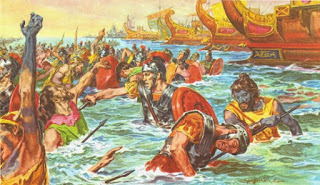
55 BC Julius Caesar and his Roman Legions invaded Great Britain.
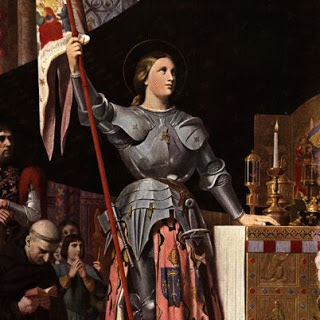
1429 Joan of Arc made a triumphant entry into Paris.
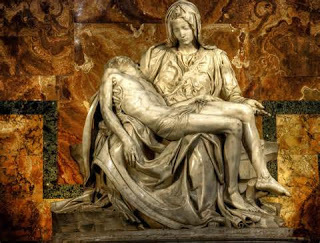
1498 Michelangelo was commissioned to carve the Pietà.

55 BC Julius Caesar and his Roman Legions invaded Great Britain.

1429 Joan of Arc made a triumphant entry into Paris.

1498 Michelangelo was commissioned to carve the Pietà.
Published on August 26, 2015 01:30



